Types of thrips
It was already mentioned above that there are many species of thrips in nature, and most of them are omnivores. However, the following species most often harm indoor, garden, garden and greenhouse crops:
Common thrips (Frankliniella intonsa)

The length of the dark brown beetle is up to 0.12 cm; it is a wide polyphage that can inhabit various cultures. It sucks the juice from flowers and ovaries. Berry, vegetable, decorative and fruit crops can suffer from it. The species can be found throughout the Palaearctic.
Floral western thrips

Floral western thrips, or California thrips (Frankliniella occidentallis). This pest is also a wide polyphage that affects a variety of crops grown both in the greenhouse and in the open field.
Ornamental thrips (Hercinothrips femoralis)
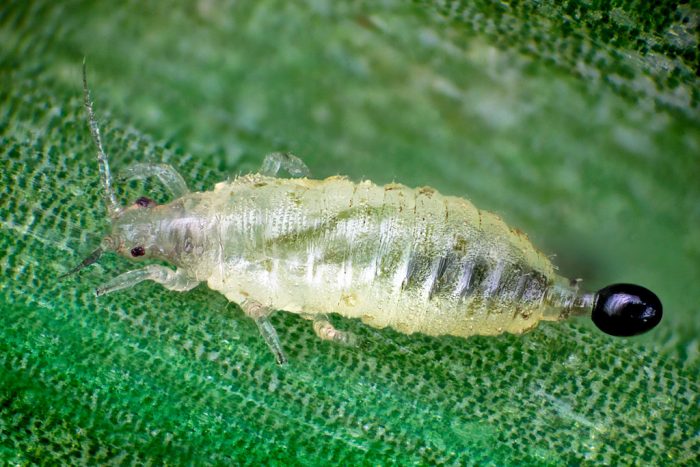
The color of such an insect is dark brown, and in length it reaches about 0.17 cm, it prefers to settle on all ornamental crops: on orchids, gardenias, cacti, calla lilies, dracenas, chrysanthemums, crotons, begonias, coleuses, palms, and also on commeline and bulbous plants. In mid-latitudes, as well as in regions with a cool climate, this species is most often found indoors.
Dracene thrips (Parthenothrips dracaenae)
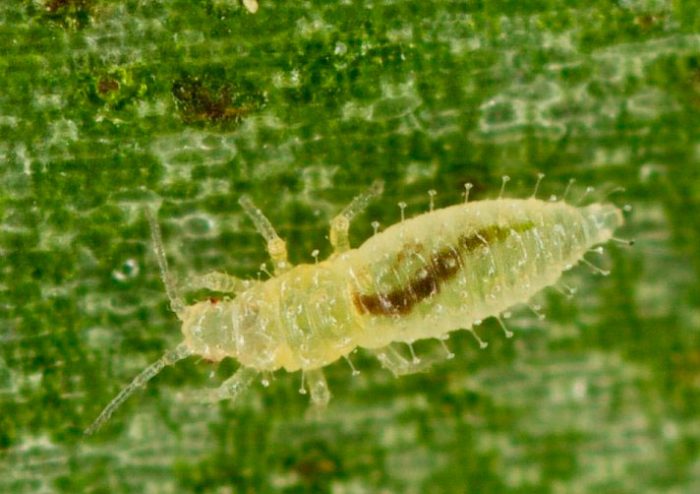
The brownish-yellow females of this species reach about 0.12 cm in length, while the males are lighter and smaller. Such insects settle on aralia, ficus, hibiscus, and also on commeline and aroid plants. Other cultures can also be damaged by them. In nature, they can be found in areas with tropical and subtropical climates, and in areas where the climate is cooler, they damage crops in closed ground and indoors.
Rose thrips (Thrips fuscipennis)
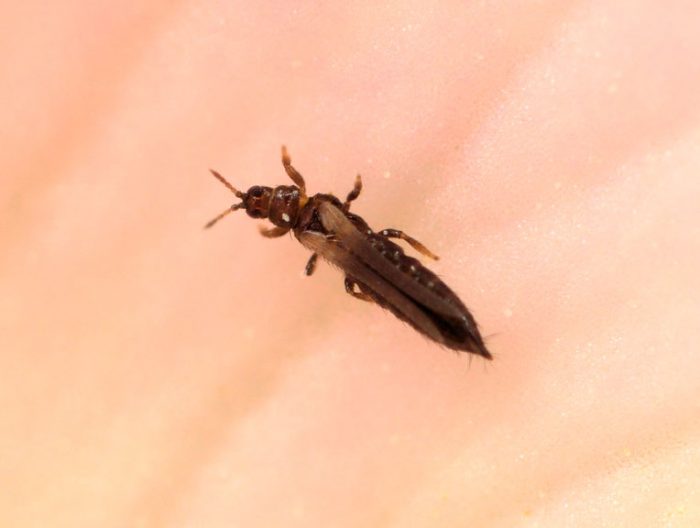
The length of the brown body in this species, which is a wide polyphage, is about 0.1 cm. This insect prefers to settle on rosaceous plants grown both in open and closed ground. They can be found in buds and flowers.
Tobacco thrips (Thrips tabaci)
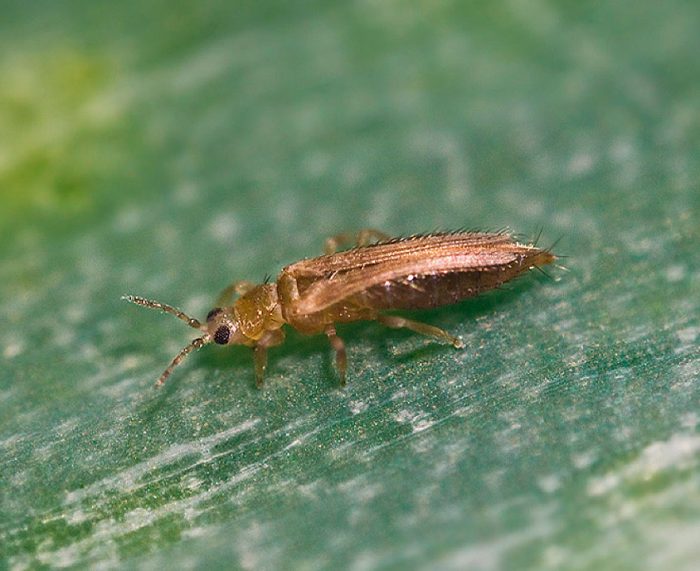
This insect can harm many crops, while most often it settles on umbrella and nightshade plants. The female's color can vary from brown to yellowish. The length of an adult is about 0.1 cm. In nature, such pests can be found in Ukraine, in the southern part of Russia and in Central Asia. In the north, such thrips are found indoors and in greenhouses.
Bulbous thrips (Liothrips vaneeckei)
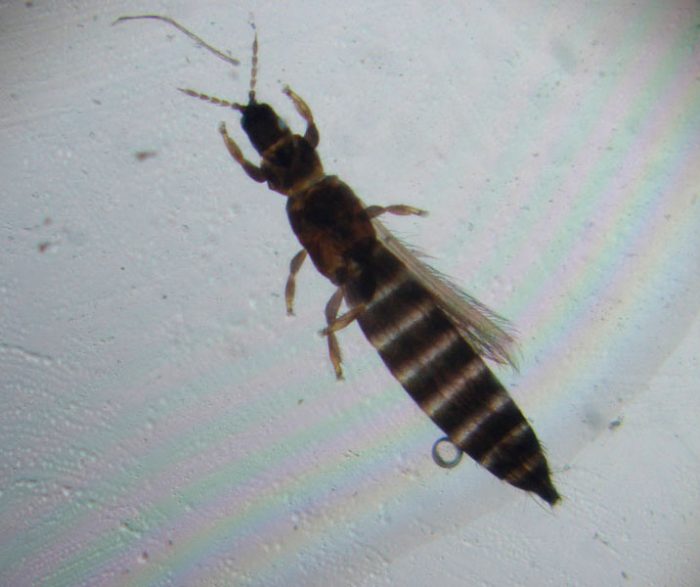
This widespread insect has a dark brown body, which reaches a length of about 0.2 cm. It settles between the scales of the bulbs.
Wheat thrips
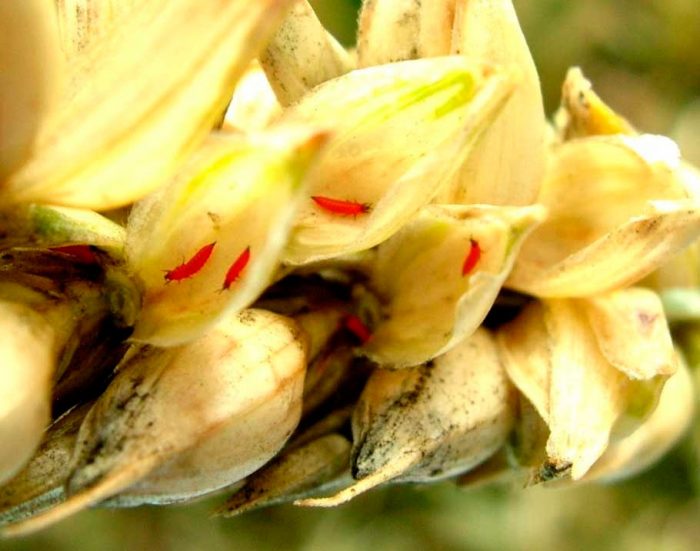
This insect can damage both ornamental and cultivated plants, but cereals most often suffer from it: rye, barley, oats, corn, and also buckwheat, cotton and tobacco. And also this pest settles on weeds. It is a dark-colored beetle, the body length of the male is about 12 mm, and the female is twice as long.
In the fight against thrips, it should be borne in mind that scientists have discovered elements of social behavior in them. This insect, like bees or ants, can gather in large groups to guard larvae and clutches, and it has also been noticed that they pave odorous paths for group coordination.
Aphids and thrips, powdery mildew. A cheap and effective way to fight.
Other pests
A dark brown midge starts up in garbage bags. It does not directly harm plants itself, but it can become a carrier of pathogens.
Small flies with a wide belly are dangerous because their larvae develop inside plant tissues, sucking out the juice. This leads to necrosis, wilting and death of the flower. Noticing many small punctures, you can cut off completely affected parts. Dry inflorescences of tansy frighten off flies.
These mobile up to two millimeters long with a bright white color, easily jumping insects appear if the soil is excessively moistened. They practically do not harm the flower directly, but they are an indicator signaling the need to reduce the watering rate. Do not allow them to be massive. When there is not enough organic matter to feed, insects will take root. Chemical compositions are acceptable for their destruction.
Different species of aphids live on indoor specimens, living in colonies of adults - winged, wingless and larvae. They suck the juice, causing the leaves to fall off, and ugly flowers bloom. They love fuchsias, roses, bulbous species, carnations. You can deal with them quickly and efficiently. With a small amount, it is enough to crush and rinse the plant with soapy water. If the crown is completely covered with aphids, it is best to cut it off. Houseplants are treated against pests with infusion of tansy, tobacco, onion, wormwood or pyrethrum diluted according to the instructions.
Small black insects mainly worsen the decor of flowers, for example, fuchsia, slowing down further growth. They die when sprayed with pesticides.
- Scorms
Outwardly, they resemble miniature wood lice. They quickly weaken the flower, sucking tender shoots, buds, leaves. Finding their colonies at the bottom of the leaf plates is not difficult. The clutches of eggs give out themselves as a cotton-like discharge. Destruction will require weekly insecticide spraying.
Mites
... On plantations in our subtropics, citrus fruits very often suffer from two types of mites - red and silver. However, in the middle lane and in the north, in indoor conditions, spider mites most often "rob". They usually move to homemade citrus fruits from vegetable and flower plants (especially pumpkin plants - cucumbers, zucchini, and also roses). It is more difficult for novice hobbyists to find them on plants from the first days of appearance than other pests. They are very small. An adult female tick is 0.7 millimeters long, and the male is even smaller - 0.3 millimeters. And yet, those who have keen eyes and often examine all the branches of their plants, usually without a magnifying glass notice unwanted tenants appearing on the underside of leaves and shoots. Outwardly, they are somewhat similar to ordinary spiders, only tiny. True, entomologists emphasize the fundamental difference between them in a number of ways. Ticks do not belong to insects, but to an independent order of arachnids. Ticks are distinguished by the presence of four pairs of legs. And what kind! Ticks touch and "smell" them, since it is here that their olfactory organs are located. Sticky hairs and claw-like formations at the top of the legs provide them with exceptional tenacity, due to which they adhere well to smooth citrus leaves, and also successfully "catapult" on their own cobwebs inside the crown of the plant. Their color gives out - brownish with a yellow or reddish tint, they stand out in contrast on a green leaf. Slightly disturbed, they begin to move quickly along it and thus give themselves away.
At first, the spider mite damages immature shoots and young leaves, but then it takes on the rest, settling on their lower, "back" side along the vein. The mites tighten the damaged twigs with a thin cobweb, under the protection of which they live and multiply incredibly quickly (ten or more generations develop in the summer alone, and each female lays an average of 150 eggs at a time). Even a beginner citrus grower can recognize a pest by this web, twisting young shoots. The results of the "black" case of ticks and their numerous larvae are striking almost immediately: the surface of the damaged leaves is covered with separate yellow-white dots and specks formed from injections and suction of cell sap, gradually becoming completely marbled.If the ticks are not destroyed in time, then all the leaves will turn yellow and curl, and later dry up and fall off. The pests themselves move to other plants.
Coccids (scale insects and pseudo-scale insects, scale insects) are the most common and dangerous enemies of citrus fruits, which are more difficult to fight than other "predators", since their body is covered with a kind of "armor" - a wax cover of a cone-convex shape. It is these shields that serve as reliable protection against many drugs. One consolation: on the plant they stand out in color (brownish, grayish-violet or similar shades) and sometimes reach 5 millimeters in size. Adult insects are motionless. They adhere tightly to shoots, leaves and fruits of plants, and suck the juice from them, emitting thick-sweet sticky substances, often "stained" with black sooty mushroom bloom.
Experts advise to deal with coccids in the larval stage, when they are still without shields and in a mobile state. However, it is difficult for amateurs-citrus growers to find them at this moment: unlike adult insects, these are very small and almost invisible against the background of leaves. Sometimes pseudo-shields give 2-3 generations. If you do not systematically fight them, then the trees grow slowly, wither, the leaves fall prematurely, and the plants often die. Initial infestation usually occurs through pest infested seedlings.
Tick species
Cobweb on flowers: what to do? To understand how to remove spider mites from indoor flowers, you need to know that they are of several types:
- common spider mite: its vast populations spread on the lower part of the leaves and on the tops of young shoots; as the colony grows, individual individuals begin to creep over the entire window sill, hitting more and more new plants; in a short time they are able to infect the entire collection; most often they affect fuchsias, balsams, ficuses, roses and dracaena; the first sign of such a lesion is yellow spots on the leaves and small white cobwebs;
red tick: most often settles on balsam, rose, nightshade, orchid, lemon; actively reproduces at high air temperatures;
false tick: dangerous in that it is very small in size and is not at all visible to the naked eye; he does not weave cobwebs, therefore, a defeat is noticed only when the plant is already beginning to die;
Atlantic mite: mainly affects exotic palms and citrus fruits, but can spread to any plant; one of the few mites that actively spread in high humidity indoors;
cyclamen tick: spreads to gloxinia, chrysanthemum, cyclamen, pelargonium, balsam, violet; he lives not only on the leaves, but also in the tubers of plants; large colonies look like a layer of dust; unlike most brethren, he loves high humidity;
wide tick: likes to settle on anthurium, euonymus, ficus, saintpaulia, oleander, citrus and cacti; he is very fertile; new colonies appear on the leaves of a diseased plant every 3-4 days; they are easy to spot: red clusters of dust and cobwebs are visible; females do not huddle in hard-to-reach places for laying eggs, so it is easy to deal with it;
cactus flat mite (briobia): affects exotic plants, can be detected by white or yellowish intermittent stripes on the leaves; the female lays large orange eggs, pulling chains from them along the veins on the leaf; found on Saintpaulia, Fatsia, can go to any plant;
clover mite: it infects ambutilon, ficus, euonymus, peperomia, orchids and various bulbous; eats out entire passages, filling them with brown dust.
Houseplants attack other types of Putin ticks: pacific, strawberry, red (flat).
All ticks are able to adapt to the most unfavorable conditions, to slow down vital processes until the onset of good conditions for reproduction. This condition is called diapause.
Read more about these and other types of spider mites in our article “Types of spider mites. How to recognize a harmful parasite? "
Houseplant pests: photos, causes and control measures
The most favorable time for pests of indoor flowers is the end of the heating period. Lack of light and dry air in the heated room expose plants to the danger of pests. During this period, spider mites and aphids especially often appear on plants. Summer and autumn are whitefly season. The best prevention is a care that suits the needs of the plants. Choose the most suitable locations. In addition, more time should be devoted to observing the plants.
First of all, pay attention to the underside of the leaves. In this case, it is often possible to detect a disease or pests in the initial stage of damage.
Diseased plants should be isolated to avoid spreading the infection to other plants.

Spider mites
Symptoms: Spider webs under and between leaves.
Reasons: too dry air.
Control measures: increase air humidity, use a warm shower, add predatory mites. Also, special preparations are used to combat these pests of indoor flowers.
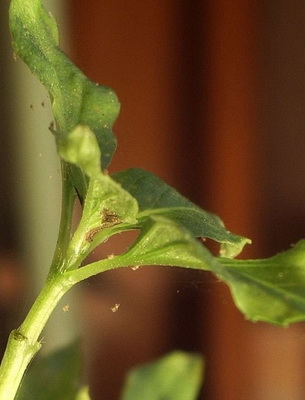
Soft-bodied mites
Symptoms: Twisted leaves, cessation of growth.
Causes: infection, which is facilitated by heat and high humidity.
Control measures: reduce temperature and humidity. Parts of indoor plants affected by this pest must be removed and destroyed.
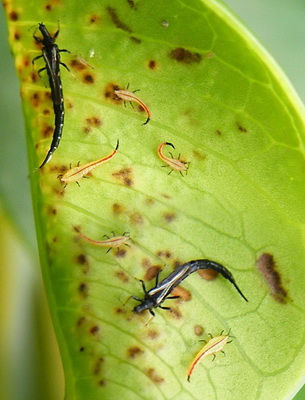
Thrips
Symptoms: Silvery streaks on the leaves.
Look at the photo - when indoor flowers are affected by this pest, brownish traces of the introduction of sucking insects appear on the underside of the leaves:
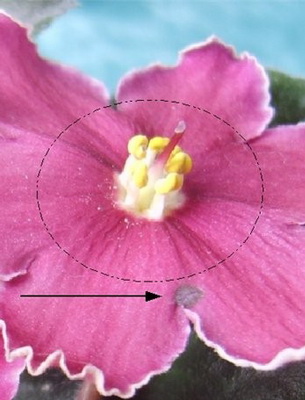
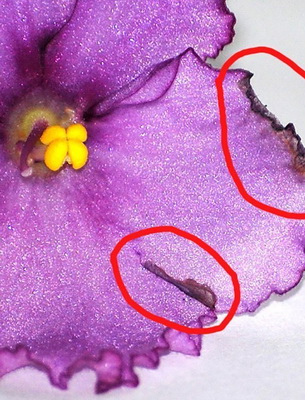
Reasons: dry air.
Control measures: warm shower. Insect traps, predatory mites, insecticides.
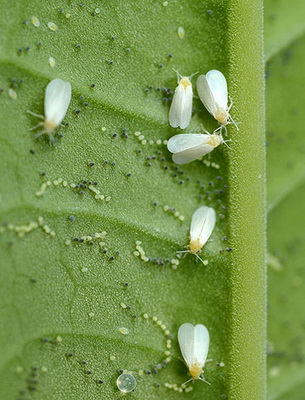
Whiteflies
Symptoms: There are small white flies on the underside of the leaves.
Reasons: infection from other plants.
Control measures: lower the temperature, since the tropical insect does not tolerate coolness. Traps, riders and insecticides are also used to combat this pest of indoor plants.
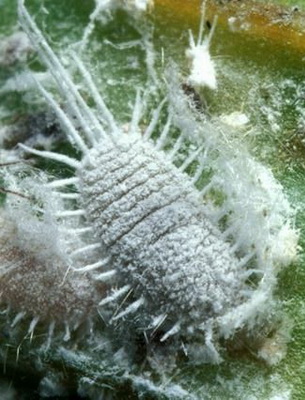
Aphids
Symptoms: sticky leaves, leaf deformation.
Reasons: draft, open windows in spring, too dry air.
Control measures: warm shower, golden eyes, predatory gall midges, riders, insecticides.

Shields
Symptoms: brown shields under which insects sit.
Pay attention to the photo - indoor plants affected by these pests shed their leaves:
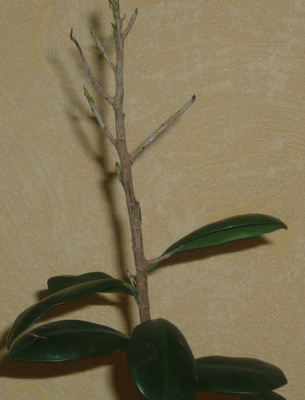
Reasons: too dry and warm air.
Pest control measures: put indoor plants in a cooler and brighter place. Remove shields. To get rid of these pests of indoor plants as quickly as possible, you need to use insecticides. For hard-leaved domestic crops, use white mineral oil or leaf shine spray.
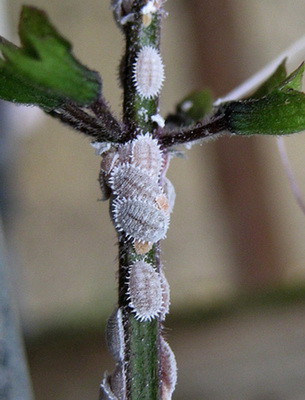
Felts and mealybugs
Symptoms: Cotton-like formations, primarily in the axils and on the underside of the leaves. Poor growth.
Reasons: too dry air.
The control measures for these pests of indoor plants are the same as for the control of scale insects.

Nematodes
Symptoms: glassy or brown spots bounded by leaf veins. Leaf shedding.
Causes: Infestation promoted by moisture on the leaves.
Control measures: remove and destroy diseased leaves. Keep the leaves dry.
Here you can see photos of the main diseases and pests of indoor plants:
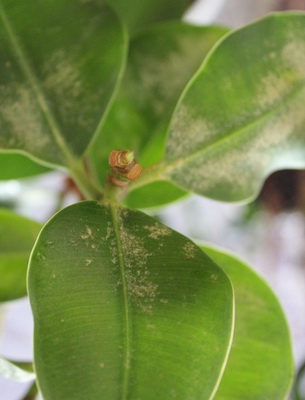
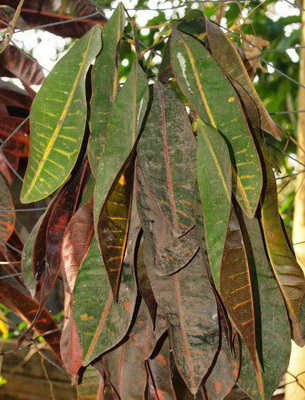
Changes in plant leaves indicate the presence of pests, diseases, or care errors. Healthy leaf is strong with flawless edges and tip
Pay attention to the metamorphosis and take action.Leaves are the vital nerve of the plant and, at the same time, the best indicator of the presence of pests and diseases.
Sometimes buds and flowers are also damaged. The main causes of such damage should be known. Pale colors of flowers indicate excess sunlight. Deformed or broken flowers signal the presence of pests such as aphids.
Mites
Cyclamen (strawberry) tick
Strawberry, or cyclamen mite infects indoor plants such as pelargonium, saintpaulia, balsam and cyclamen itself. These small arachnids accumulate at the ends of the shoots, the underside of the leaves, in flower buds and, in large numbers, look like dust settled on the external organs of the plant. Ticks feed on tissues, which is why the organs of the plant shrink, deform and become covered with spots of light brown color. Affected buds wither, and flowers lose color. Cyclamen mites thrive in high humidity conditions and are able to reproduce rapidly even in winter.
Control measures: effective in combating pests Fitoverm, Aktellik, Aktara, Akarin and other drugs that have a similar effect.
Insecticides on arachnids are weak, therefore, acaricides or insectoacaricides are used to kill ticks.
Spider mites
Red spider mites are practically invisible to the eye, but if you carefully examine the leaves, you can find tiny discolored areas on them - pest bites through which they suck the plant sap. Spider mites of all pests of indoor plants are the most dangerous. They form numerous colonies on the tops of the shoots and entangle the leaves with the finest cobwebs. Ticks, like other sucking pests, are carriers of incurable viral diseases.
Spider mites can live only in conditions of increased dry air, therefore, regular spraying and showering of plants reduces the risk of these pests appearing on indoor flowers. Ventilation is a good preventive measure against ticks.
Control measures: shoots affected by ticks must be removed, then the plant should be sprayed with water and immediately placed under a plastic bag for three days. Those plants that do not tolerate air humidity will have to be treated with acaricide, a solution of which must be abundantly moistened with external organs from all sides. Small plants can be completely immersed in a 50% acaricidal solution. They cope well with ticks Aktellik, Aktara, Kleschevit, Fitoverm, Karbofos, Akarin and similar preparations, however, you should know that ticks quickly get used to the active substance, so acaricides need to be alternated.
How to deal with the disease
Quarantine the plant, place it on the balcony or in a separate room. Examine the entire home greenhouse - every infected specimen needs isolation.
Pest control of sticky plaque
Rinse the flower with hot water - this will wash away the honeydew and some of the insects. While the pot is in the bathroom, process the windows, sills. Wash the curtains for severe infestation.
What's next:
• protect the ground with a plastic bag;
• take "green" soap (sold in flower shops);
• beat up dense foam, carefully wipe the green mass with a hard sponge;
• leave the soapy solution for 15 minutes;
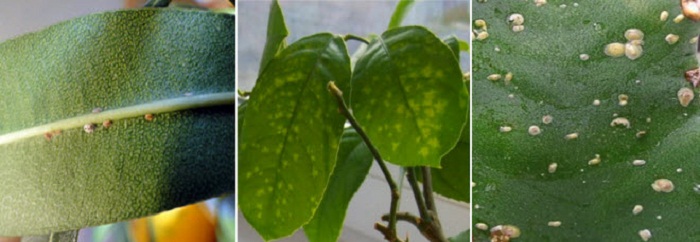
• rinse with a hot shower, dry in a warm place;
• Check the leaves periodically for sticky deposits.
What to do with brown scales
Scales are adult female scale insects. They look like small black-brown bump-shaped formations on the trunk. Often the pest is fixed where it is difficult to get it.
What to do:
• remove heavily infested, weakened leaves, shoots;
• carefully remove the visible specimens with a cotton swab, abundantly moistened with alcohol;
• prepare a solution (whisk 20 g of shavings of laundry soap in 1 liter of water), add 10 ml of alcohol;
• spread the composition over the flakes with a cotton pad or cloth. The bugs will suffocate and die in the abundant foam;
• consistently cover the leaves, paying attention to the back, areas along the veins;
• carry out 2-3 treatments at intervals of 7-10 days. After the course, the shield will disappear.
Destroy large populations with mineral or paraffin oil. Remove the top layer of soil by replacing it with fresh one. Then take a warm shower.

Thin-leaved, soft-leaved plants are sensitive to alcohol. If such a flower suffers, apply the solution with a brush, strictly along the insect colonies.
Important! Do not remove the bugs with your hands. Damage the shield - provoke the spread of the population
It will multiply exponentially.
Where do they come from?
With insufficient care, the plant is highly susceptible to various diseases and the invasion of harmful insects. Lack of moisture or, conversely, its excess, improperly selected soil, untimely transplantation, incorrectly chosen place, remaining untreated sections after removing leaves and faded buds - all this weakens the planting.
Houseplant pests appear imperceptibly, develop gradually and therefore are difficult to immediately notice. Mostly they are very small, and at the initial stage they are not even visible at all.
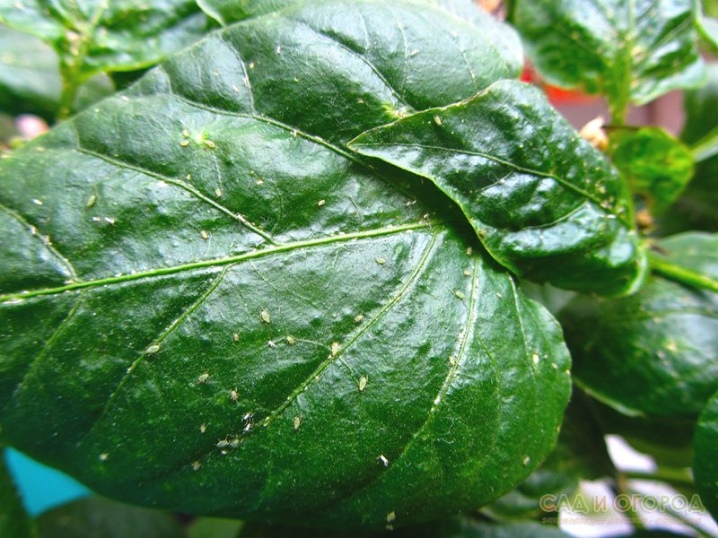
The appearance of parasites is different, depending on their type. Flying pests can fly through an open window. Others can be brought in with any plants from the street. Soil species enter the pot when replanting and replacing soil, especially if it is forest or garden land. It happens that indoor flowers, which were taken outside for the summer, return home already infected.
In the spring, when buying seedlings not in nurseries, but from random people on the way to the dacha, there is also a chance to bring unwanted guests.
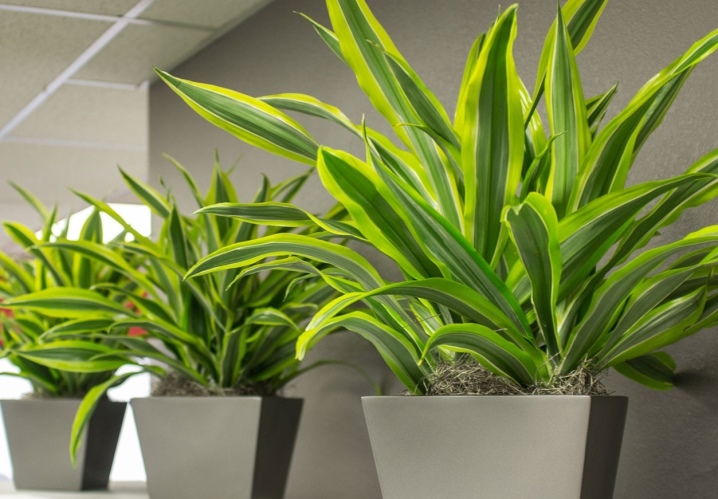
Chemical agents to combat the scabbard
In case of large-scale parasite infestation, insecticides will help save the plant. Chemicals are effective, but can be toxic to people and pets, so when using them, strictly follow the safety measures:
- process in a well-ventilated area away from food;
- make sure that there are no pets and children around during the process;
- put on rubber gloves, a protective suit and a respirator;
- prepare and use the drug strictly in accordance with the instructions;
- after processing, wash all surfaces in the place where the procedure was carried out, wash your hands well with soap and water.
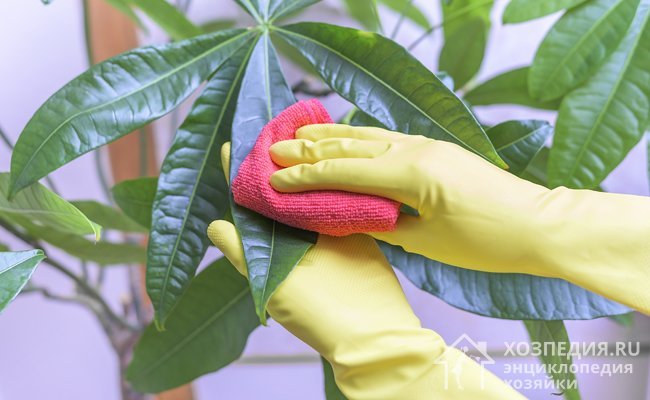 When using insecticides, follow the recommended safety precautions and thoroughly wash your hands with a disinfectant after handling.
When using insecticides, follow the recommended safety precautions and thoroughly wash your hands with a disinfectant after handling.
The following insecticides are used to combat the scabbard:
"Actellik" - the drug is used for spraying green shoots or watering the soil. To prepare a solution in 1 liter of water, dissolve 2 ml of the product and immediately carry out the treatment. The drug will not only destroy pests, but also provide protection against their repeated attack;
Fitoverm is an effective composition in the fight against parasites. For treatment, dissolve 2 ml of the product in 500 ml of water and spray the flower abundantly;
"Aktara" - the drug is used for watering the soil and wiping greenery. The procedure for preparing the solution - dissolve 1 ml of the product in 1 liter of water;
"Bankol" is an effective remedy that has a paralytic effect and kills all parasites within three days
An important condition for processing - the room temperature should be more than +27 ℃;
"Mospilan" is a systemic drug that destroys parasites at different stages of development.
 Having found a scale insect on one of the plants, carry out preventive treatment of healthy flowers to avoid the spread of parasites
Having found a scale insect on one of the plants, carry out preventive treatment of healthy flowers to avoid the spread of parasites
Chemicals are used to spray or water flowers.Toxic substances penetrate the plant sap and make it poisonous for the scale insect. To obtain the maximum effect and the destruction of young individuals, the treatment is carried out several times with an interval of 7-14 days.
Pests destroying the root system
Of particular difficulty in the complex of protective measures are pests in the soil of indoor plants, the presence of which is detected only by indirect signs, and for destruction it is mainly necessary to water the soil with insecticides.
Roots affected by gall nematodes
- Mushroom gnats - sciarids
Adult flying insects do no harm, and the larvae living in the soil, feeding on organic debris, are able to eat up the roots.
Noticing a lag in growth, it is advisable to carefully remove the plant from the pot and examine the roots. When white, small enough worms are found, it becomes clear that the roots have been eaten by enchitrea, lovers of excessively moist soil
An earthen lump is placed in a container with water for soaking, after which the roots are thoroughly but carefully washed from the soil. The plant is transplanted into newly prepared soil. In some cases, we can allow watering with an insecticide.
Fighting thrips with folk remedies
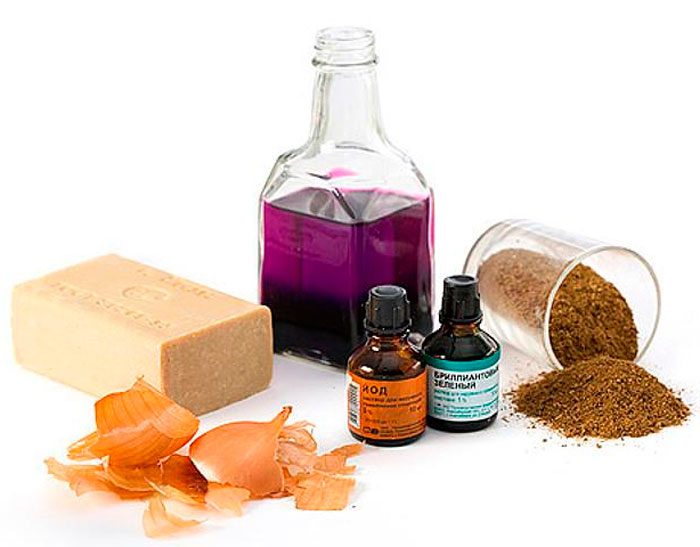
Despite the fact that folk remedies are not as effective as compared to pesticides, they are less toxic to bees, domestic animals, humans and birds. In this regard, if there are not very many thrips on the plants, you can try to get rid of them with folk remedies. They are also often used for preventive treatments.
Folk remedies:
- 1 tbsp. combine water with 1 tsp. onions or garlic, which is pre-chopped. The infusion will be ready after 24 hours, it will remain to be filtered and you can start processing indoor flowers.
- A 0.5 liter jar is filled with dry marigolds and so much water is poured in so that the container is full. After two days, the finished infusion is filtered and the culture is treated with it.
- 1 liter of warm water is combined with 50 grams of fresh roots or dandelion foliage. After 3 hours, the infusion is filtered and used to treat plants with thrips.
- Add 100 grams of pharmacy chamomile to a liter of water, mix everything well and leave for 12 hours. In the strained infusion, dissolve 5 grams of green soap crushed on a grater, after which the bushes affected by the pest are sprayed with it.
- A liter of water is combined with ½ tbsp. tobacco dust or crushed dry tobacco and leave for 24 hours. Pour another liter of water into the composition, mix everything thoroughly and use to spray plants from thrips.
- In 1 st. water add 50 grams of dry tomato foliage. The infusion will be ready after 3 hours, it is filtered and the volume is brought to one liter with clean water. Various cultures are processed with it.
- 100 grams of dried or 50 grams of fresh (crushed shoots and foliage) celandine is combined with a liter of water, the product will be ready after 24 hours. Then it is filtered and used to spray bushes from thrips.
- Finely chopped garlic is poured into a small container or turpentine is poured in, then it is placed directly in a flower pot to an indoor flower affected by thrips. After that, the bush is covered with a plastic bag for three hours.
TRIPS on indoor plants. FOLK means of struggle


